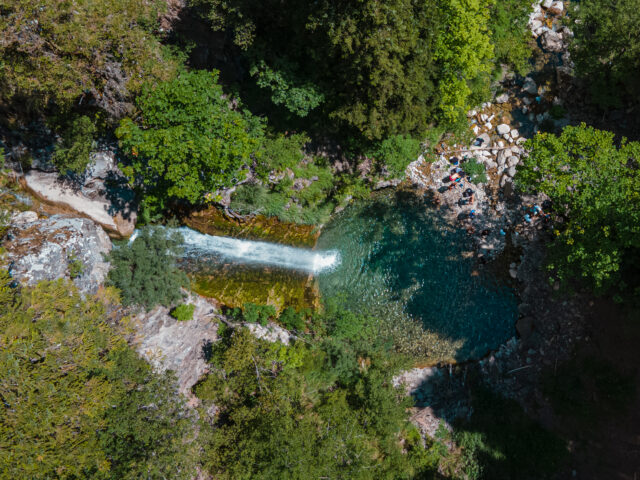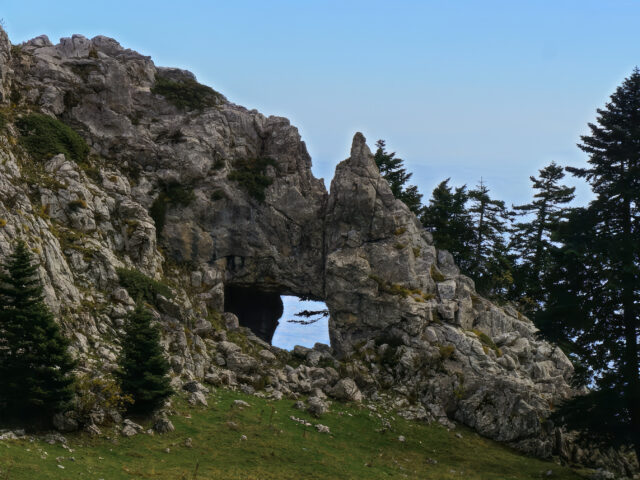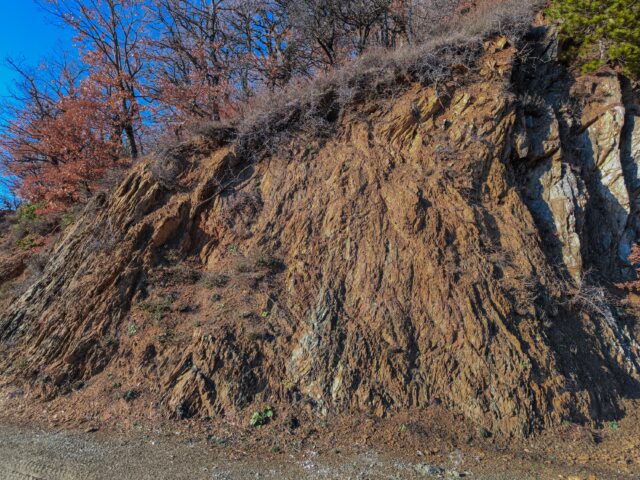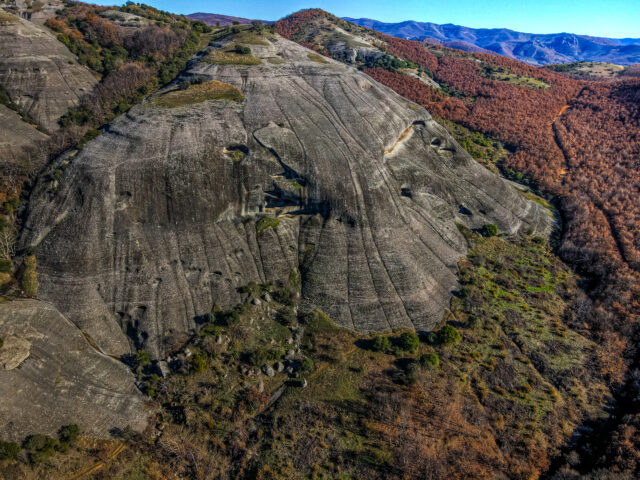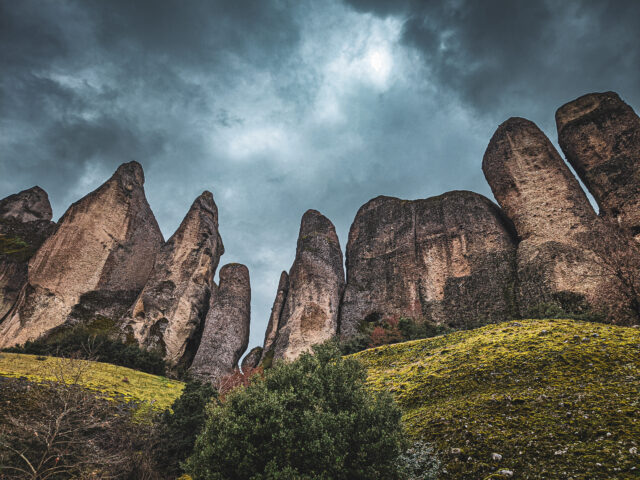Category: Geological Geosites
Natural monuments that highlight geological processes, such as the imposing cliffs of Meteora, the gorges and river valleys.
North of the village of Tzourtzia (Agia Paraskevi) located on the eastern slopes of Tzoumerka, in a narrow mountain basin, we find the largest waterfall in the area, which the locals call “The Devil’s Mandani”. A path leads to the waterfall that starts from the chapel of Agios Georgios on…
View moreTrypio Lithari is a natural arch formed by the erosion of limestone rocks on the eastern ridge of Koziakas, at an altitude of 1650 meters, and is one of the mountain's landmarks. The arch, with an opening of about 10 meters, forms a passage to the western side of the…
View moreThe Koziakas geotectonic unit, together with ophiolitic rocks, are tectonically placed towards the West on the Tertiary flysch of the Pindos belt, with a characteristic surface of compressional movement, creating the Koziakas thrust. The Koziakas tectonic thrust is indicative of the direction of compression during the final stage of the…
View moreAt the western end of Malakasiotis valley we meet the mountain village of Malakasi, shortly before the Kalambaka-Ioannina road exit to the Egnatia highway. Multicolored sedimentary rocks of oceanic origin appear along the main roads in the Malakasi area. We can observe these sediments by following the roads towards the…
View moreThe characteristic rock formations of Agios Dimitrios, Kalambaka, are a continuation of the Meteora complex to the north. On the surface of the rocky outcrops of Agios Dimitrios, erosion processes have created large or small cavities called “tafoni”. The rock outcrops of cohesive conglomerates and sandstones of the Meteora Conglomerate…
View moreThe landforms of Gavros are a continuation of the Meteora complex to the north. The rocky outcrops of cohesive conglomerates and sandstones of the Meteora Conglomerate unit were deposited as submarine drifts and belong to the Meso-Hellenic Trench, as part of the Pentalophos-Meteora Formation of Upper Oligocene – Lower Miocene…
View moreSEARCH
Looking for more?
Cras rutrum tellus et vulputate accumsan. Sed id ultricies mauris, nec semper nisl.

